THE LAB – Wahoo KICKR MOVE smart trainer – You like to move it move it?
Riding and training on an indoor trainer means riding on the spot, but the Wahoo KICKR MOVE smart trainer wants to change all that. By introducing fore and aft movement, that static feeling gives way to dynamism. Can this put a swing in your indoor training step, or will it throw you off?

Intended use long indoor sessions, regular indoor training | Manufacturer’s website
You’ll find plenty of haters of indoor training all over the world. In summary, the biggest complaint sounds something like this: despite all the training platforms like Zwift or ROUVY, indoor training simply isn’t fun. It’s too static, too boring, and too unrealistic. And every extra minute feels like an eternity. Long sessions of more than an hour, in particular, require real perseverance. In recent years, however, attempts have been made to combat this problem dynamically. A realistic riding experience promises to spice things up. Devices like incline simulators and steering pads were invented for this purpose. But even with these tools, you’re still riding on the spot. Other manufacturers tried rocker plates and suspension to make trainers less rigid, and the Wahoo KICKR MOVE smart trainer now wants to take things one step further, introducing lots of movement and thus creating a realistic riding experience. Will this really give indoor training the upswing it needs?
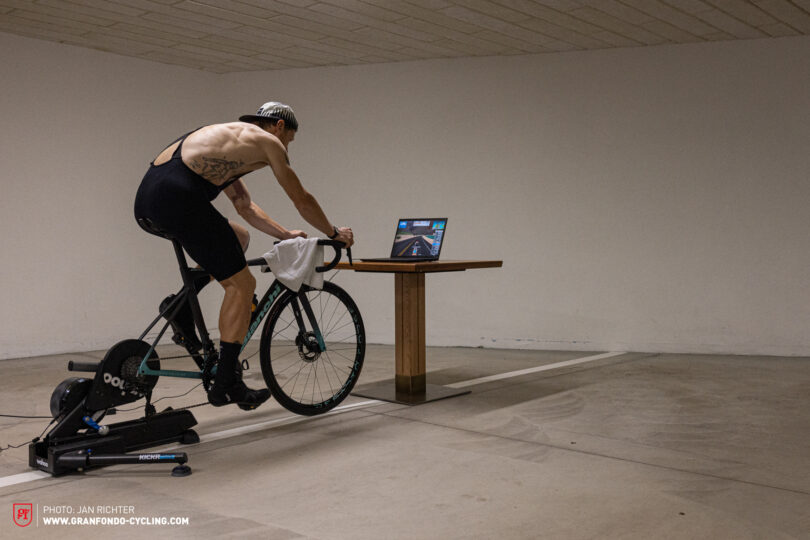

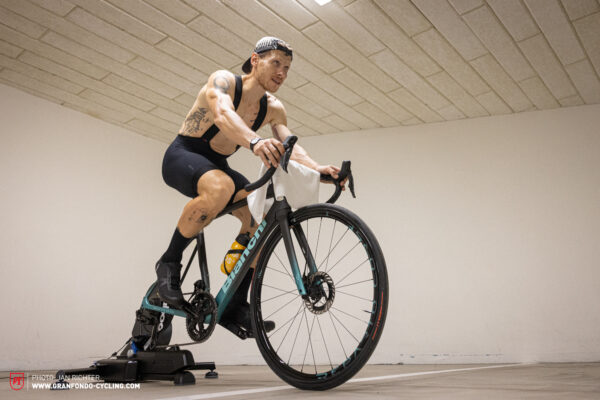
The Wahoo KICKR MOVE smart trainer in numbers
- Price: € 1,599.00
- Weight: 30 kg
- Dimensions assembled (L x H x W): 68×88×50 cm
- Max. power: 2,200 W
- Accuracy: ± 1%
- Max. simulated incline: +20%
- Max. simulated decline: -10%
- Axle compatibility: quick release – 130/135 mm, thru-axles – 142/148 mm
- Connectivity: ANT+, ANT+ FE-C, WiFi, Bluetooth, Direct Connect
- Maximum rider weight: 113 kg
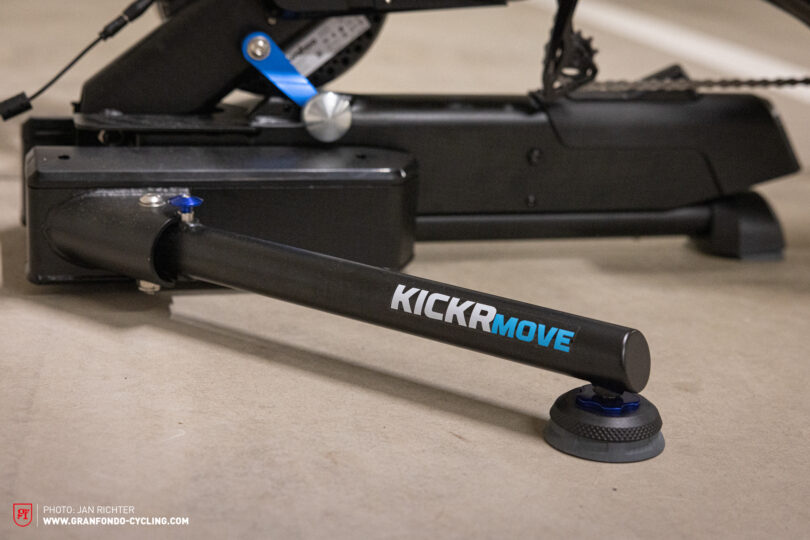
Keep on moving – How does the Wahoo KICKR MOVE work?
Over the past few years, Wahoo have proven that they know a thing or two about smart trainers. Their devices are undoubtedly among the most popular and widely used in the indoor trainer market. The Wahoo KICKR CORE also prevailed in our last smart trainer group test. When it comes to smart trainer accessories, Wahoo have also always had their fingers in the pie. Examples include the Wahoo KICKR CLIMB, which simulates gradients, and the Wahoo Headwind, which is a fan that automatically adapts to your heart rate or speed. In addition to the standard features of a high-end smart trainer, the new Wahoo KICKR MOVE also has a movement function. The trainer unit that connects to the wheel sits on a rail, so it can move freely back and forth as you train. On the one hand, this back and forth movement should provide a better and more realistic riding experience, and on the other hand, it also promises increased comfort by mitigating any jerking movements when you pedal. As with other direct mounted trainers, the bike connects directly to the cassette and axle of the flywheel. The entire trainer unit can then rock, creating fore and aft motion. The range of motion depends on the input of the rider. In other words, the trainer should move significantly less at a leisurely 140 watts than in an all-out sprint. The rubber feet on which the Wahoo KICKR MOVE rests are also intended to provide a little bit of give and damping when tilting the bike left to right. Furthermore, the fore and aft movement on the rail can be locked out if desired.

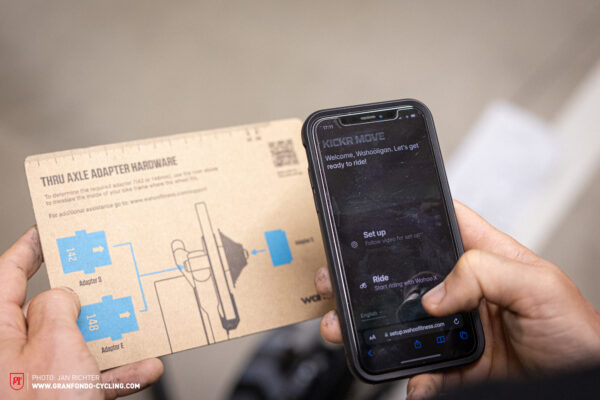
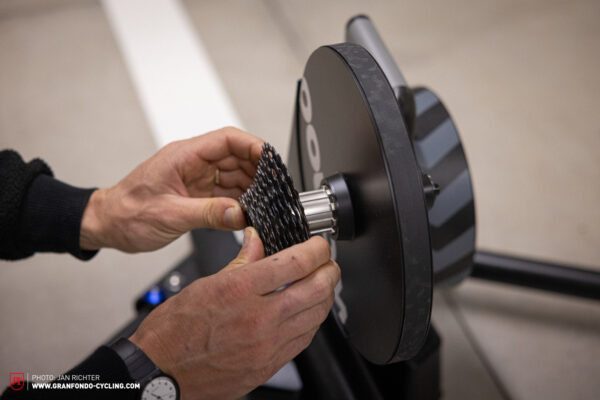
All aboard – Testing the Wahoo KICKR MOVE
Putting everything together and setting up is as easy as usual. You’ve really got to try not to get the Wahoo KICKR MOVE running. It comes fitted with an 11-speed, 11–28 t cassette out the box. It weighs in at a hefty 30 kg, which is due to the sturdy steel construction. But that also makes it feel very solid and dependable. Pairing with your PC, laptop, or Apple TV couldn’t be easier. Zwift automatically detects the trainer and all sensors without having to manually pair or search. Plug and play in the best sense. So, all there’s left to do is swing your leg over the saddle and get to it! The added movement makes training on the roller feel noticeably more natural and also more pleasant, right from the get go. However, the movement is a lot more subtle than you might think. It’s not meant to rock all the way forwards and backwards, but to accommodate the many small movements that happen while pedalling. The KICKR MOVE compensates for these by sliding back and forth just slightly. The riding experience is much closer to real cycling. The increase in comfort is mainly due to reduced pressure on your hands and buttocks.
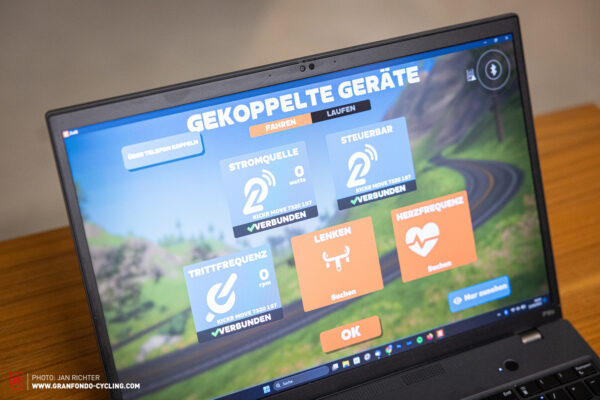

When sprinting or churning out the watts while standing, the added movement feels somewhat obstructive because it can get a bit shaky and even throw off your rhythm. Fortunately, you can lock out the movement by tapping the lockout switch with your foot, which is rather convenient and quick to do. Locking out the movement makes a lot of sense for FTP tests or Zwift races. In these instances, the fore and aft movement feels like it absorbs your input. But that’s just when you’re really hammering on the pedals. With a wattage output at around your threshold effort – which is between 280 and 320 watts in our case – this is hardly relevant. It’s only when you lock out the rail that you can feel how much more natural the small back and forth movements really feel. However, the lateral movement due to the design of the rail takes some getting used to, and remains even when you activate the lockout. The slight swaying isn’t that intense, but it is noticeable. On another note, the noise generated by the Wahoo KICKR MOVE is perfectly in line with what you would expect from a high-end smart trainer.

Our conclusion on the Wahoo KICKR move smart trainer
The fore and aft movement of the Wahoo KICKR MOVE smart trainer results in much more pleasant riding experience as well as increased comfort. Since you can’t lean into corners, the riding experience still isn’t realistic, though it’s significantly more realistic than many static indoor trainers, nonetheless. The lateral movement takes some getting used to and, in contrast to the fore and aft movement, there’s no stopping it. Ultimately, if your indoor training sessions last 90 minutes or more, you will benefit from this device.
Tops
- very realistic riding experience
- easy to assemble
- easy pairing with Zwift and other training software
Flops
- the lateral movement cannot be stopped
For more Information visit wahoofitness.com
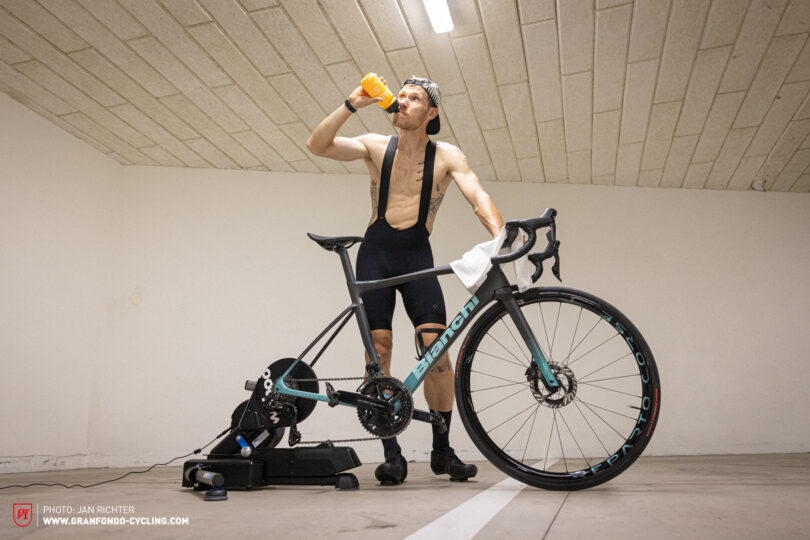
Did you enjoy this article? If so, we would be stoked if you decide to support us with a monthly contribution. By becoming a supporter of GRAN FONDO, you will help secure a sustainable future for high-quality cycling journalism. Click here to learn more.
Words: Martin Staffa Photos: Jan Richter






